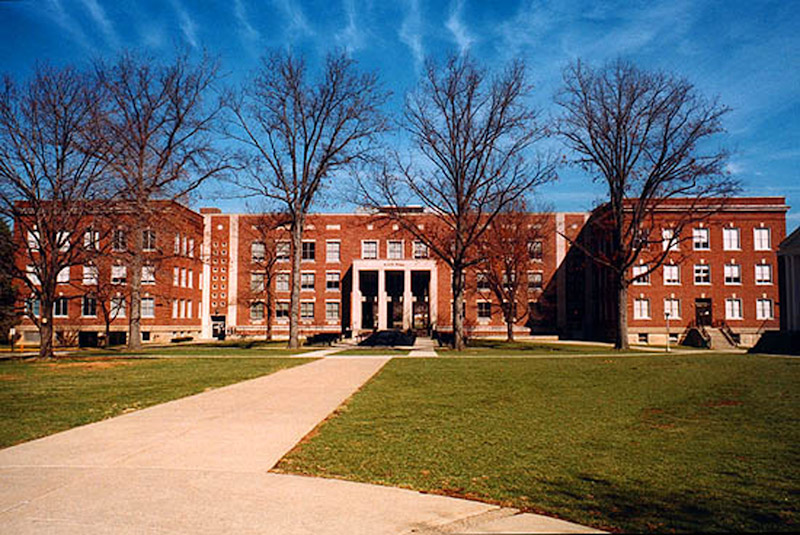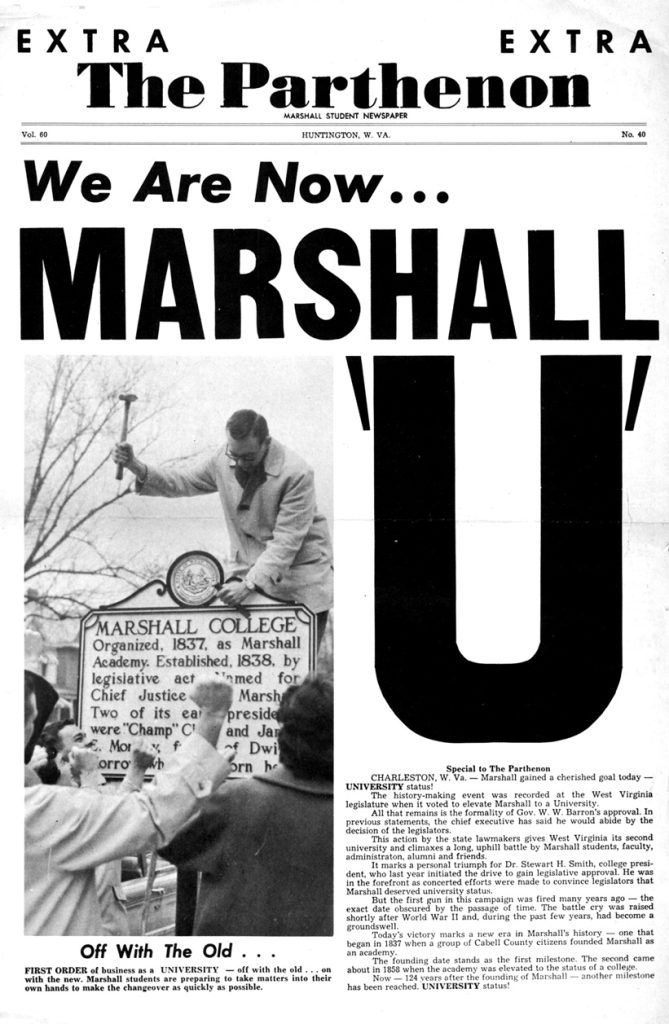
Contact: Stan Bumgardner bumgardner@wvhumanities.org
304-346-8500
February 22, 2023
Charleston WV – The following events happened on these dates in West Virginia history. To read more, go to e-WV: The West Virginia Encyclopedia at www.wvencyclopedia.org.

March 1, 1831: Jackson County was created from parts of Wood, Mason and Kanawha counties and named in honor of Andrew Jackson, the seventh president.
March 1, 1870: The legislature passed an act to create a branch normal school at West Liberty. For the next 61 years, the school was a teacher preparatory institution. It is now a university.
March 1, 1898: Homer Adams Holt was born in Lewisburg. In 1937, he became West Virginia’s 20th governor.
March 2, 1840: The Virginia General Assembly granted a charter for Bethany College. From the beginning, it has been a four-year, baccalaureate-degree college, the oldest such institution in West Virginia.
 March 2, 1896: Clair Bee was born in Pennsboro. Bee was a successful, innovative college basketball coach and widely published author of both technical basketball books and young adult fiction centered on sports.
March 2, 1896: Clair Bee was born in Pennsboro. Bee was a successful, innovative college basketball coach and widely published author of both technical basketball books and young adult fiction centered on sports.
March 2, 1915: A blast swept through Layland No. 3 Mine in Fayette County, killing 114 men.
March 2, 1927: The West Virginia capitol building known as the “pasteboard capitol” was destroyed by fire. This wood-frame building in downtown Charleston had been built in just 42 days after the previous Victorian-style capitol building burned in 1921.
March 2, 1961: Governor Wally Barron signed legislation that granted Marshall College university status.
March 3, 1843: Barbour County was created from parts of Lewis, Harrison and Randolph counties and named for the distinguished Virginia jurist Philip Pendleton Barbour.
March 3, 1890: Teacher and civic activist Memphis Tennessee Garrison was born in Virginia. She helped develop NAACP chapters in southern West Virginia and created the Christmas Seal Project.
March 4, 1849: Earl Williams Oglebay was born in Bridgeport, Ohio. He became one of Wheeling’s most successful industrialists and generous benefactors.
March 4, 1893: Governor William MacCorkle gave his inaugural address in which he warned that West Virginia was “passing under the control of foreign and non-resident landowners.”
March 4, 1924: Blues musician Nathaniel H. “Nat” Reese was born in Salem, Virginia. Growing up in Princeton, Reese learned and played blues, jazz, country and dance music throughout the southern coalfields. He is a member of the West Virginia Music Hall of Fame.
March 5, 1856: Calhoun County was created from neighboring Gilmer County and named for John C. Calhoun, who served as vice president under John Quincy Adams and Andrew Jackson.
March 5, 1963: Country musician Hawkshaw Hawkins was killed in a plane crash in Tennessee, along with Patsy Cline, Cowboy Copas, and Randy Hughes. Hawkins was born in Huntington.
March 6, 1820: Joseph H. Diss Debar was born in France. Diss Debar was the designer of the Great Seal of West Virginia and the state’s first commissioner of immigration.
March 6, 1828: Johnson Camden was born in Lewis County. In 1861, he opened one of the state’s first oil wells, in Wirt County, and a refinery in Parkersburg in 1869. He was elected to the U.S. Senate in 1881.
March 6, 1900: A mine explosion at the Red Ash Mine in Fayette County killed 46 men. It was the state’s first major mine disaster of the 20th century. Five years later, another 24 men were killed at the same mine.
March 7, 1856: Tucker County was formed from Randolph County and named for Henry St. George Tucker Sr., a Virginia soldier, statesman and jurist.
March 7, 1929: The legislature adopted the official state flag. The state’s coat of arms is emblazoned in color in the center. Above the seal is a red ribbon lettered “State of West Virginia,” and a wreath of rhododendron surrounds the lower part of the seal. The white field of the flag is bordered on four sides by a strip of blue.
March 7, 1990: West Virginia teachers went on strike after negotiations with the governor’s office and legislature failed to produce an agreement on a pay package. Teachers in 47 of the 55 counties were involved in the 11-day strike.


